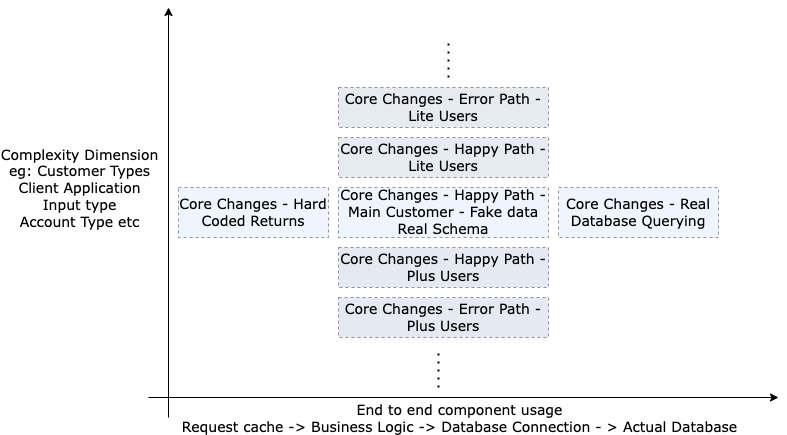Unleashing the Power of Small Stories: Strategies for Breaking Down Backend API User Stories
Introduction
In the world of software development, breaking down requirements into smaller, more manageable pieces is often hailed as a best practice. The concept of creating smaller user stories has gained traction for several reasons. Not only does it align with the principle of “aim small, miss small,” but it also offers numerous advantages that contribute to more successful development projects. In this blog post, we will explore the benefits of small stories and dive into practical strategies for breaking down backend API user stories effectively.
Advantages of Small Stories

Breaking down backend API user stories into smaller units brings several advantages to the development process:
-
Easier Review: Smaller stories are easier to review and provide feedback on. With a clear focus and concise scope, reviewers can quickly understand the functionality and provide more targeted feedback, leading to faster iterations and improved collaboration.
-
Easier Estimation: The “aim small, miss small” principle applies here. Smaller stories are easier to estimate accurately. When a story is broken down into smaller parts, each with its own estimated effort, the overall estimation becomes more precise. This leads to better planning, increased predictability, and reduced risks of underestimation or overestimation.
-
Easier Validation: Validating smaller stories becomes more manageable. Each small story represents a specific functionality or feature that can be independently validated. This enables early and frequent validation throughout the development process, allowing for quick iterations and course corrections, if necessary.
-
Enhanced Transparency: Smaller stories provide higher transparency and visibility into sprint progress. During daily stand-ups and stakeholder updates, progress can be easily tracked with a series of completed, small stories. This promotes transparency and helps stakeholders understand the incremental progress being made.
-
Alignment with INVEST: Small stories align with the INVEST acronym, which stands for Independent, Negotiable, Valuable, Estimable, Small, and Testable. By breaking down user stories into smaller units, teams ensure that each story is independent, negotiable, valuable, estimable, small, and testable, enabling more effective development and delivering value incrementally.
Taking a Detour: Exploring the INVEST Principle
Before we dive deeper into strategies for breaking down backend API user stories, let’s take a detour to explore the INVEST principle. While it may seem like a slight diversion, understanding INVEST is crucial because it provides a set of guidelines to create effective user stories. By adhering to these principles, we can ensure that our user stories are well-defined, manageable, and deliver real value.
The INVEST principle helps us in several ways. Let’s break down the acronym to understand its key aspects:
-
I: Independent. User stories should be self-contained and independent of each other, allowing for flexibility in prioritization and development. By reducing dependencies between stories, teams can work on them concurrently and make progress more efficiently.
-
N: Negotiable. User stories should be negotiable and open to discussion between the development team and stakeholders. This promotes collaboration and allows for adjustments to the scope, requirements, or implementation approach as needed throughout the development process.
-
V: Valuable. User stories should deliver value to the end-users or customers. Each story should focus on a specific feature or functionality that provides meaningful outcomes and contributes to the overall value of the product.
-
E: Estimable. User stories should be estimable in terms of effort and complexity. This enables the team to effectively plan and allocate resources, and facilitates decision-making regarding the priority and sequencing of the stories.
-
S: Small. User stories should be small enough to be completed within a single iteration or sprint. By keeping stories small, teams can maintain a steady and predictable pace of development, achieve faster feedback loops, and improve visibility into progress.
-
T: Testable. User stories should be testable, meaning they have clear and well-defined acceptance criteria. This ensures that the functionality described in the story can be validated through testing, allowing the team to verify that the desired outcomes have been achieved.
By exploring the INVEST principle, we gain valuable insights into creating user stories that align with agile principles and facilitate successful development. Now, let’s continue our journey and delve into strategies for breaking down backend API user stories.
For further reading on the INVEST principle, you can refer to the following resources:
- User Stories Applied: For Agile Software Development by Mike Cohn
- INVEST in Good Stories, and SMART Tasks by Bill Wake
These resources provide in-depth explanations and practical examples of how to apply the INVEST principle in agile development projects.
Breaking Down Backend API User Stories

When it comes to breaking down backend API user stories, a systematic approach is key. The journey begins by starting with the API interface. By utilizing techniques such as hardcoded or facaded backing, developers can quickly provide initial functionality and facilitate rapid prototyping. This early release of the API allows for valuable feedback and experimentation from client teams.
Dimension-based development is another strategy that proves valuable in tackling complexity. By focusing on dimensions such as customer type, content type, input type, and output type, developers can incrementally address specific variations within the API. This approach ensures that the development effort aligns closely with the evolving user stories.
In parallel, incremental database changes can be made to accommodate the evolving API requirements. By integrating database modifications in an iterative manner, the backend infrastructure can adapt to support the changing needs of the API.
It is important to note that as user stories are broken down, the corresponding test workload should also be decomposed. This ensures that the testing aligns with the decomposed user stories, enabling comprehensive test coverage and validating the functionality of individual components.
To summarize this section let’s try to draw what we have been talking about so far.

How to Break Down Any Story to smaller parts
They key thing to note is that you are in charge what the Y axis denotes - customer type, client type, etc. You can choose whatever makes sense for you. Usually you will choose the option that has the largest possible number of values because that results in the work being sliced to the smallest size.
The next thing to note is that you can split the horizontal work to as many parts as you want. You can add the full business logic in one go. Or if you feel like it is too complex and will take too long, you can deliver it partially. What you cannot do is not delivery changes without the API interface changes, you have to lead with them. Otherwise there will be no point and you will be building something that will never get tested before the full work is done.
Test-Driven Development (TDD) and Behavior-Driven Development (BDD)
To further enhance the development process, Test-Driven Development (TDD) and Behavior-Driven Development (BDD) practices can be employed. TDD promotes writing tests before writing the code, ensuring that the error handling and validation logic are developed in parallel with the API implementation. BDD scenarios can be crafted to focus on business-level errors, helping to validate the API’s behavior and ensure comprehensive test coverage.
Incorporating unit testing throughout the development process verifies the functionality of individual components, ensuring that they function as intended and adhere to the user story requirements.
Conclusion
By harnessing the power of small stories, backend API development can become more efficient, predictable, and adaptable. Breaking down user stories into manageable units offers benefits such as enhanced clarity, better estimation accuracy, and improved focus. Strategies such as starting with the API interface, dimension-based development, incremental database changes, and aligning test workload breakdown contribute to the success of the overall development process. With the incorporation of TDD and BDD, developers can further ensure robust error handling and comprehensive test coverage.
In your journey as a backend API developer, remember the value of small stories. Embrace these strategies, streamline your development process, and unleash the full potential of your backend API projects.
